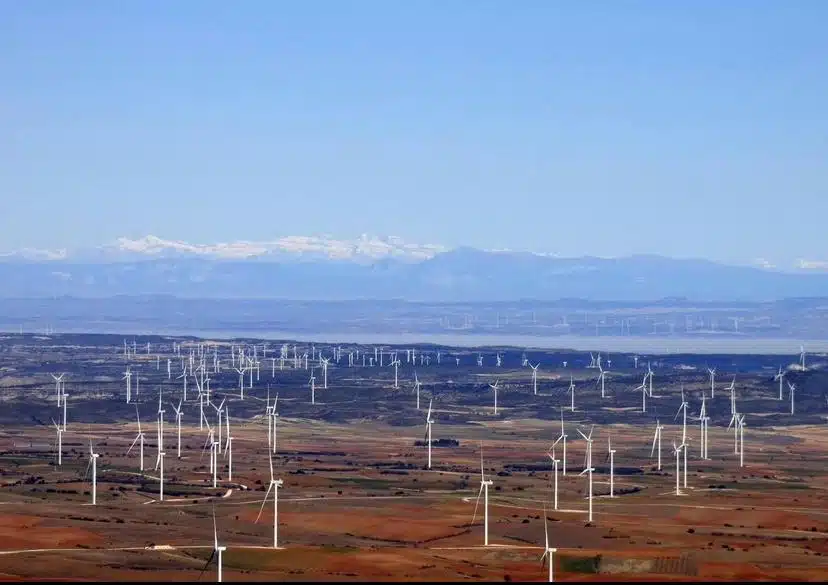One month after the blackout, the Spanish government has at least identified the provinces where the problem began — though it still doesn’t know why. We’ve been told that thousands of data points must be analyzed to find the answer, and more delicately, to determine responsibility and the potentially massive compensation claims that could follow.
In the meantime, Spaniards have learned a few things about one of the pillars of modern life — energy — which, despite being our source of light, remains shrouded in darkness. Prime Minister Pedro Sánchez has done little to shed light with his public statements.
Sánchez has framed the crisis as a clash between the good guys who back renewables and the mega-rich who support nuclear power. At this point, no reasonably informed person is against renewables: they’ve lowered energy bills, increased energy sovereignty, and don’t emit CO₂. But citizens are also aware that the same big energy corporations who once built nuclear plants, dams, coal stations, and combined-cycle facilities are now blanketing Spain with solar panels and wind turbines.
And they’ve done so — in the past and now — in alignment with government policy. The current administration made a swift and decisive bet on renewables, pushing ahead without the caution that a change in the energy mix demands. The result: a nationwide blackout on April 28.
In the absence of clear explanations from officials, numerous experts — from various technical and political backgrounds — have offered detailed insights. They’ve explained how the integration of renewables, especially solar power, at this stage of their economic and technological development introduces instabilities that must be offset by more consistent energy sources. Indeed, that’s what has been done in the aftermath of the blackout. The rapid expansion also demands urgent investment in grid infrastructure.
Speed vs. Safety
Those of us who have seen the dramatic transformation unfolding right outside our doors know that end goals have taken precedence over safety and deliberation. Discretion has been the rule, and once again, the most depopulated areas have been sacrificed for the benefit of the wealthiest.
In Aragón, the regional government under Javier Lambán made it easier to break up renewable energy projects into smaller chunks — each under 50 megawatts — to keep them under regional rather than national environmental oversight, even when adjacent parks collectively added up to hundreds of megawatts. As the dean of civil engineers in Aragón put it, it’s like evaluating the environmental impact of a motorway in five-kilometer stretches instead of looking at the full route.
As a result, thousands of wind turbines now populate the sparsely inhabited regions of Aragón, with photovoltaic fields spreading beneath them — except in municipalities that are pushing back. One of these is Ejea de los Caballeros, the hometown of the former regional president, which amended its zoning plan to limit projects to 3 megawatts and require that they be built on industrial land. In other words, truly for self-consumption — or paying what a renewable plant really costs, as an industrial operation. Only 8% of municipal land may be used for such installations, and under strict conditions.
While Ejea protects itself, the Maestrazgo’s villages and mountains have been left exposed. The largest renewable complex in Spain is now in the hands of CIP, a Danish firm. Due to its scale, it was authorized directly by the Council of Ministers. In July 2024, the government approved the Maestrazgo Cluster: 20 wind farms with 122 turbines, each 200 meters tall, plus two solar farms, roads, and evacuation lines. The project spans nearly 1,000 hectares of privileged terrain within the Maestrazgo Geopark — an area rich in biodiversity, with towns of striking architectural and natural beauty. Nearly half are officially protected as Sites of Cultural Interest: Cantavieja, Castellote, Fortanete, La Iglesuela, Mirambel, Miravete, and Villarroya de los Pinares. Some have been used as film locations thanks to their preserved buildings and landscapes. Mirambel, for instance, was one of the backdrops for Ken Loach’s Land and Freedom, chosen in part for its meticulous restoration efforts — a fact remembered during the film’s anniversary.
A Beautiful Region Trampled in the Name of the Environment
The project has sparked legal challenges, and ten scientific organizations focused on conservation and territorial planning have written to Minister Aagesen expressing alarm over the potential damage to the landscape, biodiversity, and geological heritage. Still, no one seems to want to look there. Meanwhile, Secretary of State for the Environment Hugo Morán has shown concern for pine trees potentially affected by the expansion of Zaragoza’s amusement park. What do those pines have that the Maestrazgo’s landscape lacks?
Thanks to this policy, Aragón is now one of the top producers and exporters of renewable energy — no matter the cost. The Partido Popular (PP) exploited the issue for electoral gain, and once in office, celebrated the formation of a parliamentary inquiry. Yet it eagerly jumped aboard the renewables boom, reaping the benefits of housing the plug for our energy-hungry society. So much so that it still hasn’t delivered the promised spatial plan for renewables — a key recommendation of that very Commission.
The PP said “no” to solar panels on Pyrenean reservoirs, citing conflict with tourism, but it avoids mentioning equally sensitive zones: Albarracín, Matarraña, Moncayo, Maestrazgo. It also sidesteps criticism of how developers — often mega-rich investors or opportunistic middlemen — secure preferential treatment, sometimes flipping permits for profit. Just weeks ago, a local judge, Concepción Gimeno, urged the regional government to produce the plan, following pleas from residents of the village of Cosa (population: 62), where six projects are set to occupy 80% of the town’s land. Once a project is declared “of public utility” — a key legal distinction — it trumps any other land use, marking the first time such a privilege has been granted to private firms.
More Grid, More Questions
While Aragón’s president Jorge Azcón calls for more power lines to ensure local consumption and link with France via a buried connection, the scale of some projects — like Maestrazgo — continues to draw criticism. Meanwhile, the influx of data centers and the use of PIGAs (Plans of General Interest of Aragón) to fast-track their approval raise alarms. These plans bypass local governments, offer opaque benefits to companies with massive energy demands, uncertain water rights, and little direct employment.
Under this model, the Lambán government approved 48 projects over eight years. Azcón’s government has racked up 34 in under two.
Against this backdrop, Sánchez’s framing of the blackout debate as a dispute over energy sources is not just misleading — it’s cynical. Part of Aragón’s energy was supposed to flow to Catalonia via high-voltage lines that were blocked by municipalities in Tarragona. That same week in February, as the official gazette announced the cancellation of the Teruel–Barcelona line due to pressure from Sánchez’s Catalan allies (ERC and Junts), Junts and the PP jointly submitted a motion in Parliament to extend the life of nuclear power plants — a debate growing louder by the day. Sooner or later, Sánchez will have to concede: 56% of the electricity consumed in Catalonia today comes from nuclear, and there simply isn’t enough time to replace it.
A Nuclear Horizon?
At a recent event in Zaragoza’s Mobility City, Buddy Rizer — the executive credited with turning Virginia into the U.S. hub for data centers — spoke about the sector’s benefits for employment and population growth. He also predicted that, within a decade, data centers will run primarily on nuclear power. As will France’s contribution to Spain’s energy supply — a deal Minister Rivera, a former anti-nuclear hardliner, accepted as “green” to secure her post as a European Commissioner.
Returning to the blackout, it’s clear that renewable expansion should have gone hand in hand with building the grids and infrastructure to support it. It also required a fairer map — one that balanced producers and consumers, respected sensitive regions, and coordinated across sectors.
In this frantic push, it’s one thing for the southern landowners to profit off their estates — now yielding easy rents without labor or agricultural obligations. It’s quite another to witness what’s happening in places like the olive groves of Jaén or the banks of the Ebro, where fields of solar panels now stretch across the landscape. On Google Maps, the so-called “Sea of Aragón” is now a sea of solar panels. And in exceptional areas like the Maestrazgo, local mayors should not be seduced by short-term profits that run counter to the region’s essence — and its future.
One thing is certain: what’s being done in the name of the environment must not become a backdoor to justify a nuclear future. There are too many zealots and party loyalists for a world this complex — and this endlessly hungry for energy.

A blackout of responsibility
At the end of April, Spain suffered a massive power outage whose cause remains unclear. A month later, the government offers no answers — only a polarizing narrative: renewables are for the virtuous, nuclear power for the ultra-rich.
But the real problem isn’t the type of energy. It’s the unchecked speed of the renewable rollout, often at the expense of planning, transparency, and fragile landscapes.











